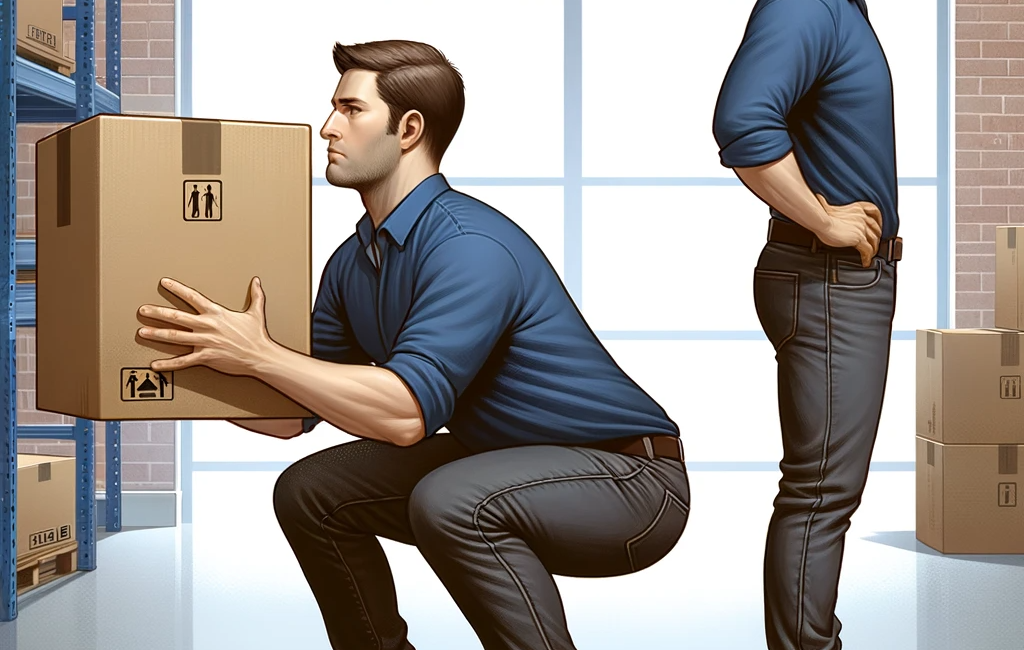Lifting objects, whether in the gym, at work, or during daily chores, is a common activity. However, improper lifting techniques can lead to serious back injuries and pain. Understanding and applying the correct lifting methods is crucial for maintaining a healthy back. This article will guide you through the proper techniques to prevent back pain and injuries.
Before diving into the techniques, it’s essential to understand the structure at risk – your back. The spine supports your body and allows for movement but is susceptible to injury if not treated with care. Painful strains, sprains, herniated discs, and even chronic back conditions can arise from a single moment of careless lifting.
Proper Lifting Techniques:
- Plan Your Lift: Before lifting, assess the object. Determine its weight, size, and where you will place it. Ensure your path is clear to avoid any tripping hazards.
- Stand Close to the Object: Position yourself as close to the item as possible. The closer it is to your body, the less strain you put on your back.
- Stable Stance: Stand with your feet shoulder-width apart. A stable base supports balance and can help distribute the weight more evenly.
- Bend Your Knees, Not Your Back: Squat down to the object by bending your knees and hips, not your back. This technique ensures that your legs, not your back, do the heavy lifting.
- Firm Grip: Hold the object with both hands and a tight grip. Ensure your hands are not slippery.
- Lift Gradually and Smoothly: Lift by straightening your hips and knees, not your back. Keep the object close to your body, and lift gradually and smoothly, without jerking.
- Keep Your Back Straight: Throughout the lift, keep your back as straight and aligned as possible. Tuck in your chin slightly to keep your spine in a natural position.
- Turn Your Feet, Not Your Torso: If you need to turn, move your feet to turn your body, rather than twisting your torso.
Common Mistakes to Avoid:
- Lifting too quickly: Rapid movements can increase the risk of injury.
- Twisting while lifting: This can put undue stress on the spine.
- Lifting with your back: It puts unnecessary pressure on your spine.
- Overreaching: Reaching too far and lifting can cause you to lose balance and strain your back. Always position yourself as close as you can to the object you will be lifting
When to Seek Help:
- Heavy Objects: If an object is too heavy, always ask for help or use mechanical aids like a dolly.
- Persistent Pain: If you experience back pain that doesn’t go away with rest or over-the-counter medication, consult a healthcare professional.
Proper lifting techniques are vital for maintaining a healthy back. By understanding and applying these methods, you can minimize the risk of injury and keep your back strong and pain-free. Remember, your back is a central part of your body’s foundation. Treat it with care, and it will support you for a lifetime.
Visit BackPainRelief.com regularly for more tips and articles on maintaining a healthy back.

